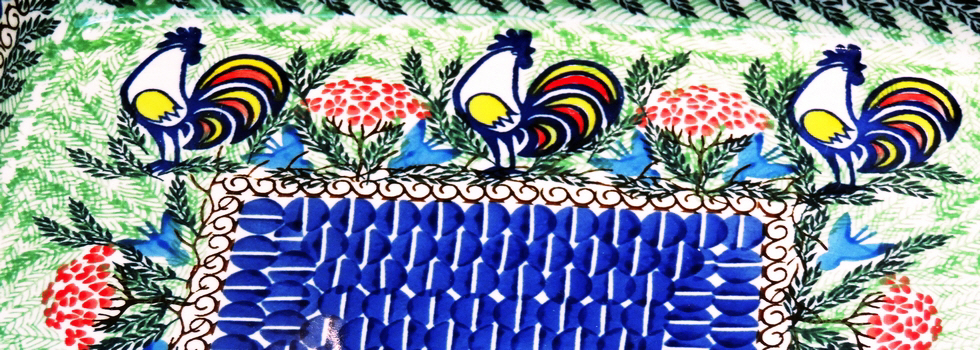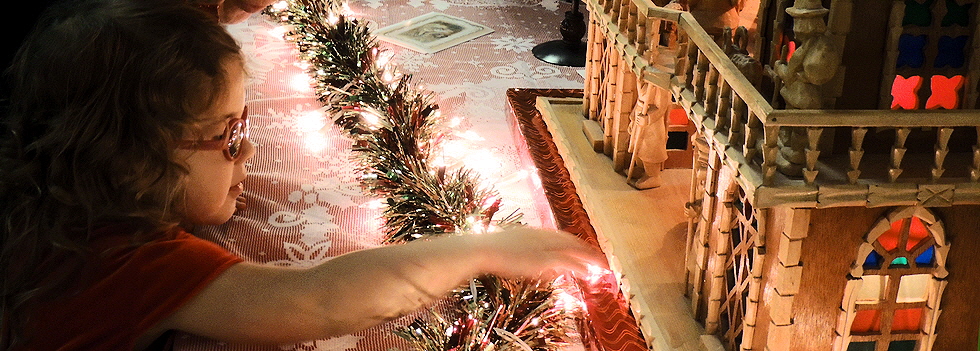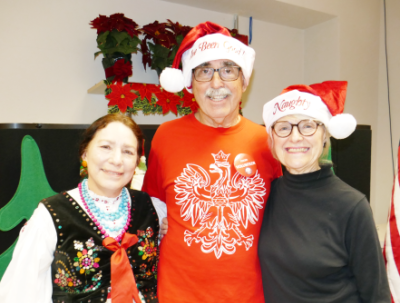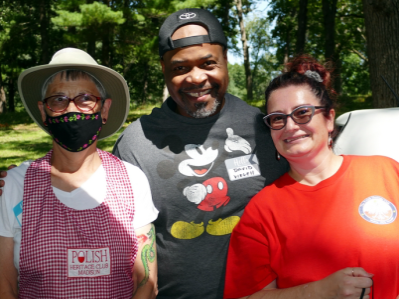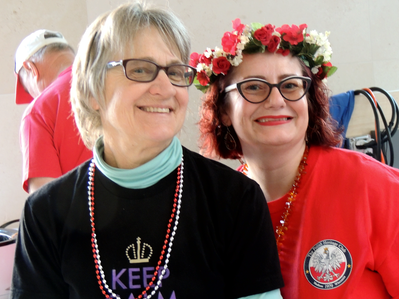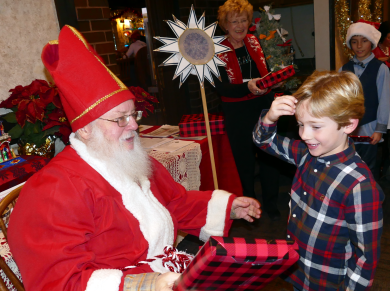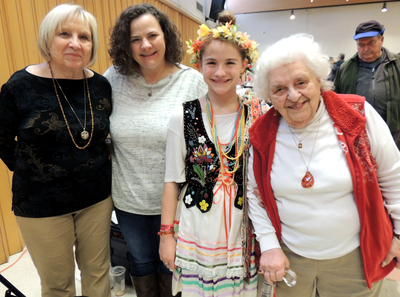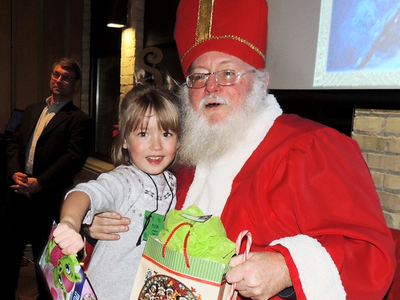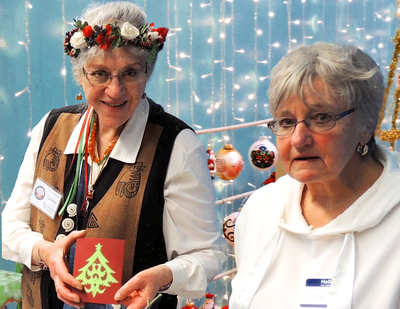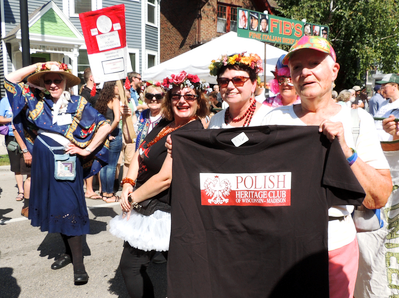Author: Irena Fraczek
In the Jubilee Year of Polish Independence...
To commemorate the 100th anniversary of the restoration of Poland's sovereignty, the Sejm of the Republic of Poland (the lower chamber of the Polish Parliament) declared 2018 to be the Jubilee Year of Poland's Independence. In two separate resolutions, the Sejm proclaimed 2018 to be also the year of Zbigniew Herbert, Irena Sendler, Ignacy Tokarczuk and the Bar Confederation. In December 2017, the Polish Senat (the upper house of the Polish Parliament) added to this list the Polish Scouting, Women's Rights and the Greater Poland Uprising (1918-1919).
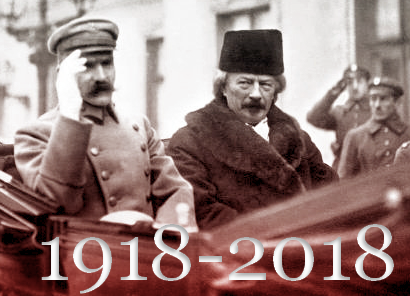
Józef Piłsudski (Chief of State) and
Ignacy Paderewski (Prime Minister)
arriving at the Polish Parliament (1919)
Image adopted from Wikimedia Commons
November 11, 2018 marks the centennial of Poland regaining independence after 123 years of partitions by Russian, German and Austro-Hungarian empires. On that day in 1918, Józef Piłsudski became the head of Polish Army and de facto chief of the sovereign state known as the Second Polish Republic. The Sejm resolution pays tribute to the generations of Poles fighting for the dream of free Poland and working to preserve the "spiritual and material substance of the nation." Among the "Fathers of Independence" mentioned in the motion is Ignacy Paderewski, cherished in the United States for his piano virtuosity. Using his worldwide fame to promote the idea of independent Poland, he is widely credited for his role in the U.S president and Nobel Peace Prize winner, Woodrow Wilson, including the creation of Polish sovereign state as one of prerequisite peace conditions for ending the World War I. Presented to the U.S. Congress on January 8, 1918 as point XIII of his famous "Fourteen Points," this declaration remains the most remembered contribution of the United States into the rebirth of independent Poland.
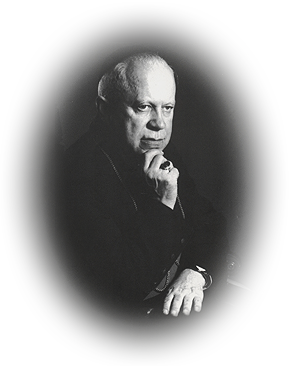 February 1, 2018 brings the 100th anniversary of the birth of Ignacy Tokarczuk (1918-2012), one of the spiritual leaders of the Pole's peaceful struggle for freedom in the dark years of communist rule. During his tenure as Bishop (1966) and then Archbishop of Przemyśl (1992), he tirelessly defended the rights of the faithful against the governmental repressions (earning him the name of "The Unwavering Bishop”) and his curia served as meeting grounds for the democratic and pro-independence opposition. A staunch proponent of the Solidarity movement, he was active in providing aid to those interned during the martial law (1981) and their families, supported the underground opposition activities and fostered initiatives to popularize the true history of Poland and its independent culture.
February 1, 2018 brings the 100th anniversary of the birth of Ignacy Tokarczuk (1918-2012), one of the spiritual leaders of the Pole's peaceful struggle for freedom in the dark years of communist rule. During his tenure as Bishop (1966) and then Archbishop of Przemyśl (1992), he tirelessly defended the rights of the faithful against the governmental repressions (earning him the name of "The Unwavering Bishop”) and his curia served as meeting grounds for the democratic and pro-independence opposition. A staunch proponent of the Solidarity movement, he was active in providing aid to those interned during the martial law (1981) and their families, supported the underground opposition activities and fostered initiatives to popularize the true history of Poland and its independent culture.
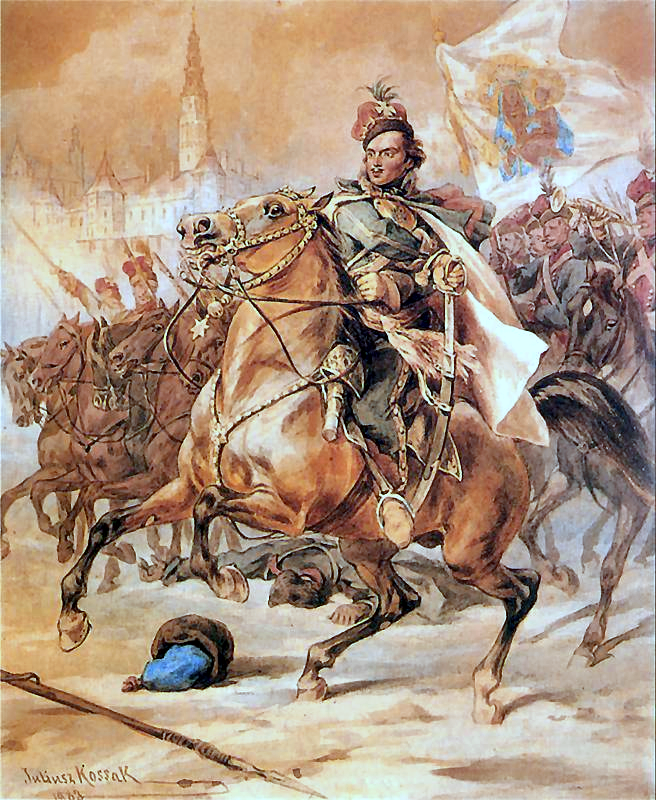
Casimir Pulaski in Częstochowa
Painting by Juliusz Kossak (1824-1899)
February 19, 2018 highlights the 250 anniversary of the Bar Confederation, an alliance of Polish nobles (szlachta) formed in 1768 at the Polish fortress of Bar in Podolia (currently in Ukraine) and aiming to protect the Catholic faith and the Polish–Lithuanian Commonwealth against Russian influence. Its defeat precipitated the First Partition of Poland (1772). An estimated 5,000 confederates were taken prisoners by the Russians and deported to Siberia (often with their families), forming the first major group of Poles exiled to Siberia. Along with the Constitution of May 3, 1791 and the Kościuszko Uprising, the Bar confederation became a part of the fight for freedom lore cultivated during the Partitions of Poland. Among the famous Bar confederates was Casimir Pulaski, who became a Polish-American hero after arriving to the United States in 1777 on the Lafayette and Benjamin Franklin's invitation to join the American Revolutionary War.
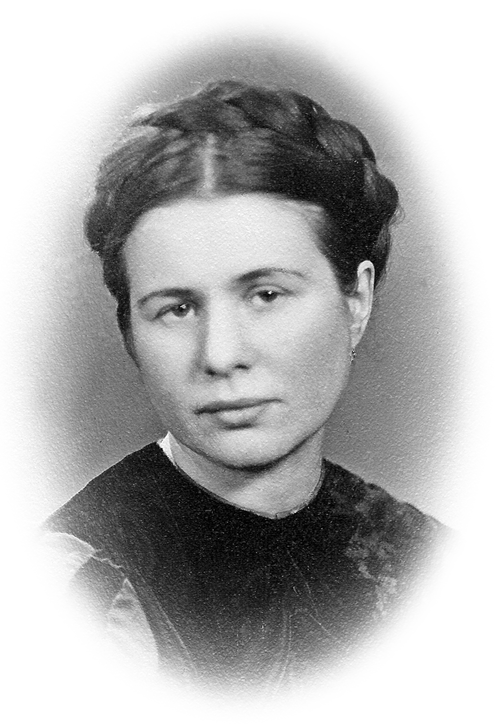 May 12, 2018 brings us back to the XX century and the 10th anniversary of the death of Irena Sendler (1910-2008), a Polish nurse known for saving around 2,500 Jewish children from the Holocaust. As a head of children's department of Żegota, an underground organization of Polish resistance in German-occupied Poland, she was instrumental in smuggling Jewish children from the Warsaw Ghetto and finding for them shelter in Polish foster homes, convents and social care facilities. For these extraordinarily heroic acts (concealing Jews by Poles was then punishable by death and in fact, she narrowly escaped execution after Germans discovered her activities), Irena Sendler received numerous awards and tokens of recognition, while Yad Vashem recognized her as Righteous Among the Nations in 1965.
May 12, 2018 brings us back to the XX century and the 10th anniversary of the death of Irena Sendler (1910-2008), a Polish nurse known for saving around 2,500 Jewish children from the Holocaust. As a head of children's department of Żegota, an underground organization of Polish resistance in German-occupied Poland, she was instrumental in smuggling Jewish children from the Warsaw Ghetto and finding for them shelter in Polish foster homes, convents and social care facilities. For these extraordinarily heroic acts (concealing Jews by Poles was then punishable by death and in fact, she narrowly escaped execution after Germans discovered her activities), Irena Sendler received numerous awards and tokens of recognition, while Yad Vashem recognized her as Righteous Among the Nations in 1965.
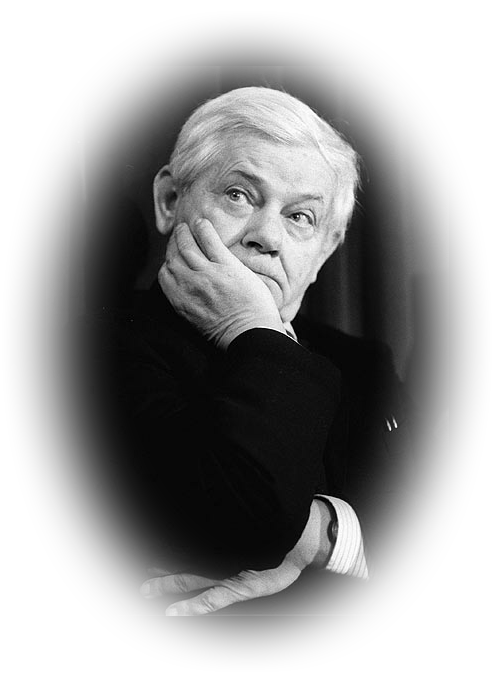 July 28, 2018 turns focus to the 20th anniversary of the death of Zbigniew Herbert (1924-1998), one of the greatest and most translated Polish and European writers of poems, essays and drama of the XX century. Publication of his work translations in the United States helped him to become one of the most popular Polish poets in the English literary circles. The Polish Sejm pays tribute to him as a champion of the canons of beauty and craftsmanship in the arts and in life, the ethical codes clearly differentiating between the good and evil. His experience of living through the horrors of Nazism and Communism provided him with inspiration to explore and resist the evil mechanisms of power and ideology - as well as to reconciling beauty with the reality of human suffering - in both his literary work and real life.
July 28, 2018 turns focus to the 20th anniversary of the death of Zbigniew Herbert (1924-1998), one of the greatest and most translated Polish and European writers of poems, essays and drama of the XX century. Publication of his work translations in the United States helped him to become one of the most popular Polish poets in the English literary circles. The Polish Sejm pays tribute to him as a champion of the canons of beauty and craftsmanship in the arts and in life, the ethical codes clearly differentiating between the good and evil. His experience of living through the horrors of Nazism and Communism provided him with inspiration to explore and resist the evil mechanisms of power and ideology - as well as to reconciling beauty with the reality of human suffering - in both his literary work and real life.
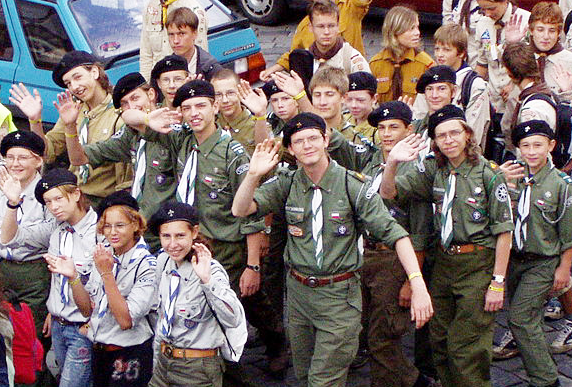
Polish Scouts, 8th Central Euro Jamboree
By Azymut via Wikimedia Commons CC BY-SA 4.0
November 11, 2018 doubles as a salute to Polish scouting (called in Poland "harcerstwo") with the 100th anniversary of the Polish Scouting and Guiding Association, currently the largest organization of scouts in Poland. Its beginnings go back to 1910 and the city of Lwów, where its founder, Andrzej Małkowski, set apart Polish "harcerstwo" from its customary forms in other countries as "scouting plus independence." True to this distinction, generations of Polish scouts (called in Polish "harcerze") become the heroic fighters in the defence of Lwów against Ukrainians in 1918 (the Lwów Eaglets), the Greater Poland Uprising, the Polish-Soviet War, Silesian Uprisings, and the World War II (the Grey Ranks). The Senat resolution pays tribute also to the ethos of scouting organizations opposing the communist rulers and soviet occupiers after the World War II.
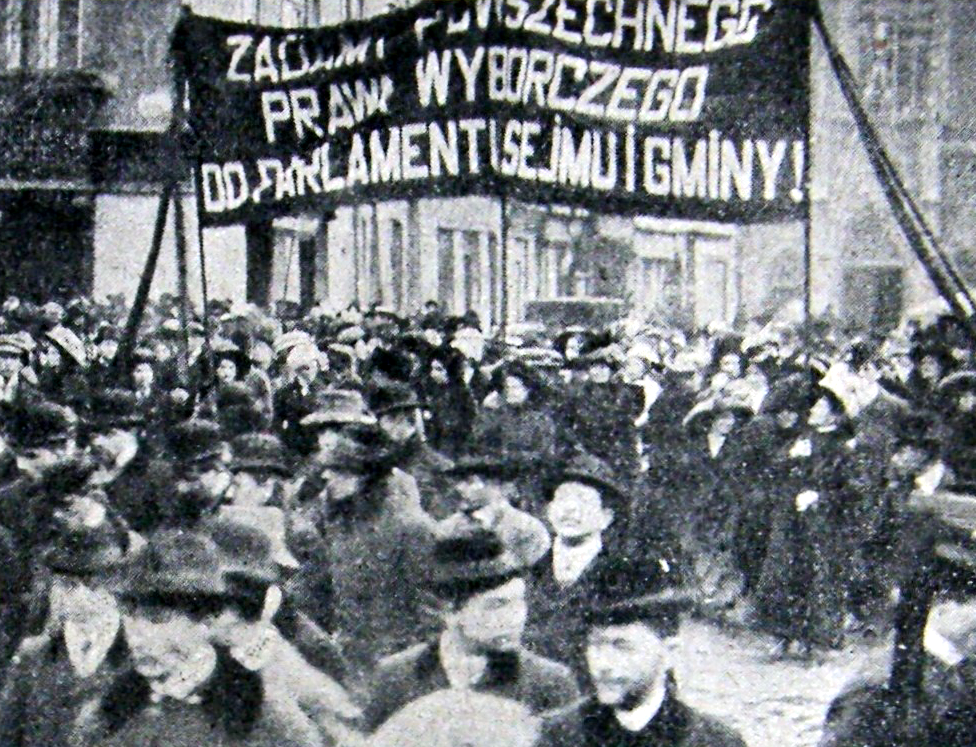
Manifestation of Polish suffragettes
on Women's Day in Kraków (1911)
By Nowości Ilustrowane, via Wikimedia Commons
November 28 brings to the fore the 100 anniversary of Polish women gaining full voting rights shortly after the Polish state was officially reborn (by comparison, the Nineteenth Amendment to the US Constitution guarantees such right to American women since 1920). The Election Regulation Decree signed by Józef Piłsudski on November 28, 1918 stipulated also that regardless of gender, every eligible voter could also be elected to both houses of the Polish parliament. Based on this decree, eight women representing the full political spectrum made history after being elected in parliamentary elections held on January 26, 1919. It is in tribute to those eight women that Polish Sejm declared 2018 to be the Year of Women’s Rights.
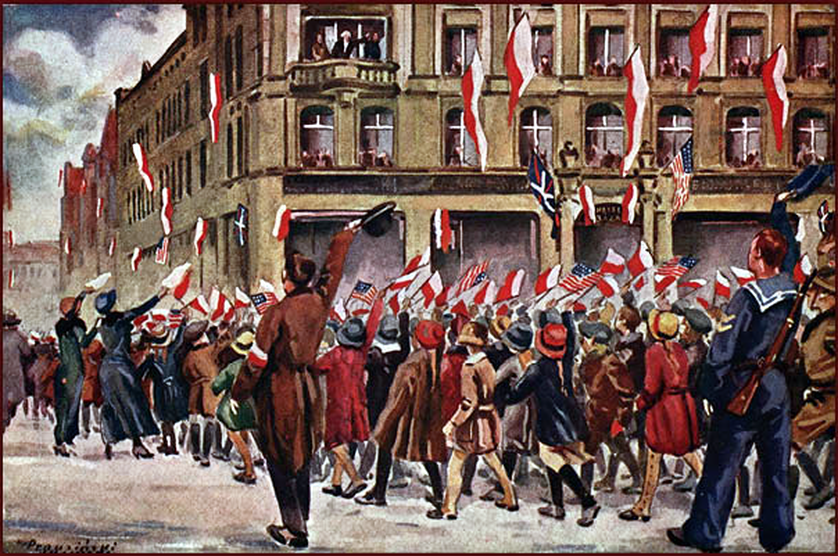
Polish children pay homage to Ignacy Paderewski
in Poznań's Hotel Bazar on December 27, 1918. (Painting by Leon Prauziński, executed by Germans in 1940 for painting scenes from the Wielkopolska Uprising)
December 27 calls attention to the Greater Poland Uprising (Powstanie Wielkopolskie) of 1918-1919, one of the very few Polish insurgences that ended in a victory. Its aim was to return Wielkopolska, at the time under the Prussian rule, to the newly formed Polish state. The revolt erupted as Ignacy Paderewski stopped in Poznań on his way back to Poland (December 26, 1918). Thanks to the determined and heroic efforts of the people of Wielkopolska, and the high toll of blood (continued during the World War II, when German occupiers publicly executed any surviving Wielkopolska insurgents they could hunt down), nearly all of the traditionally Polish land (known as the "cradle of Poland") ended within the boundaries of the Second Polish Republic.
Irena Frączek (last edits on January 13, 2018)
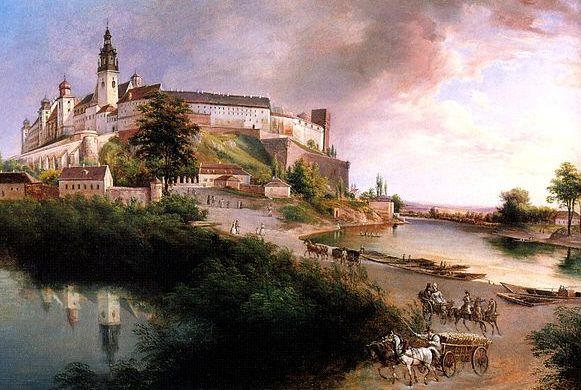 Year 2017 marks the 550 anniversary of the first flis (transport of goods on rafts and floating barges) on the Wisła River after Poland signed the Second Peace of Toruń (1466) with Teutonic Knights and regained access to the upper part of the river and its mouth. Known also as the Queen of Polish Rivers, Wisła is a symbol of Polish identity and cultural heritage. For centuries, it was the main trading artery (for grains, timber and salt) and key factor in the economic boom that made Poland a major political and economic power in Europe during the Polish Golden Age (15th-17th century). [Painting by Jan Nepomucen Głowacki (ca 1847) shows the Wisła river and barge landing at the foot of Wawel, the Royal Castle in Kraków]
Year 2017 marks the 550 anniversary of the first flis (transport of goods on rafts and floating barges) on the Wisła River after Poland signed the Second Peace of Toruń (1466) with Teutonic Knights and regained access to the upper part of the river and its mouth. Known also as the Queen of Polish Rivers, Wisła is a symbol of Polish identity and cultural heritage. For centuries, it was the main trading artery (for grains, timber and salt) and key factor in the economic boom that made Poland a major political and economic power in Europe during the Polish Golden Age (15th-17th century). [Painting by Jan Nepomucen Głowacki (ca 1847) shows the Wisła river and barge landing at the foot of Wawel, the Royal Castle in Kraków]
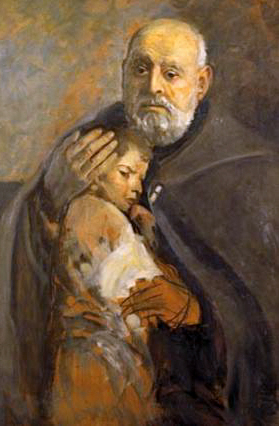 Adam Chmielowski (1845-1916) is also known as the Saint Brother Albert after Pope John Paul II beatified him (1983) and canonized as a Roman Catholic Church saint (1989). The sainthood process started in 1966 under Pope Paul VI who declared him Venerable in 1977. Chmielowski was born into an aristocratic Polish family, fought in the January Uprising (1863), studied engineering in Belgium and became a well-known painter (after studies in Paris and Munich). Later he joined the Third Order of Saint Francis (1887), devoted his life to the poor and homeless, and founded the Albertine Brothers (1888) and Albertine Sisters (1891) congregations of the same order. He is also a hero of the play written by Pope John Paul II, which became a base for the movie "Our God’s Brother" (directed by Krzysztof Zanussi and starring Christoph Waltz and Scott Wilson. [Painting by Leon Wyczółkowski, ca 1901-1902]
Adam Chmielowski (1845-1916) is also known as the Saint Brother Albert after Pope John Paul II beatified him (1983) and canonized as a Roman Catholic Church saint (1989). The sainthood process started in 1966 under Pope Paul VI who declared him Venerable in 1977. Chmielowski was born into an aristocratic Polish family, fought in the January Uprising (1863), studied engineering in Belgium and became a well-known painter (after studies in Paris and Munich). Later he joined the Third Order of Saint Francis (1887), devoted his life to the poor and homeless, and founded the Albertine Brothers (1888) and Albertine Sisters (1891) congregations of the same order. He is also a hero of the play written by Pope John Paul II, which became a base for the movie "Our God’s Brother" (directed by Krzysztof Zanussi and starring Christoph Waltz and Scott Wilson. [Painting by Leon Wyczółkowski, ca 1901-1902]
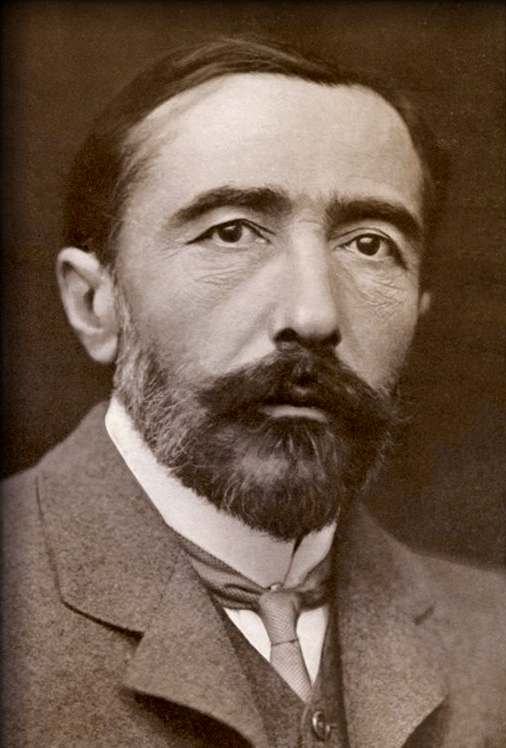 Joseph Conrad (1857-1924) is one of the leading figures in the world's literature and one of the greatest novelists to ever write in English (despite acquiring it only in his twenties). He was born in a fiercely patriotic Polish family as Józef Teodor Konrad Korzeniowski but favored his middle name Konrad received in tribute to poetic works of the great Polish poet, Adam Mickiewicz (Dziady and Konrad Wallenrod). He left Poland in 1874 and began a career in merchant fleet (19 years) resulting in the experiences becoming later a backdrop for the prolific literary work. Translated into many languages and exerting influence on many great writers, his most famous novels include Lord Jim, Nostromo, The Nigger of the 'Narcissus', The Secret Agent, The Shadow Line and Under Western Eyes (banned in the communist Poland). But Heart of Darkness remains his most influential work with adaptations for music and opera scenes, radio and theatre plays, TV productions, motion pictures (Apocalypse Now and Heart of Darkness) and several video games. Conrad's story entitled "The Duel" ("Point of Honor" in the United States) was adopted in the screenplay for the movie The Duellists.
Joseph Conrad (1857-1924) is one of the leading figures in the world's literature and one of the greatest novelists to ever write in English (despite acquiring it only in his twenties). He was born in a fiercely patriotic Polish family as Józef Teodor Konrad Korzeniowski but favored his middle name Konrad received in tribute to poetic works of the great Polish poet, Adam Mickiewicz (Dziady and Konrad Wallenrod). He left Poland in 1874 and began a career in merchant fleet (19 years) resulting in the experiences becoming later a backdrop for the prolific literary work. Translated into many languages and exerting influence on many great writers, his most famous novels include Lord Jim, Nostromo, The Nigger of the 'Narcissus', The Secret Agent, The Shadow Line and Under Western Eyes (banned in the communist Poland). But Heart of Darkness remains his most influential work with adaptations for music and opera scenes, radio and theatre plays, TV productions, motion pictures (Apocalypse Now and Heart of Darkness) and several video games. Conrad's story entitled "The Duel" ("Point of Honor" in the United States) was adopted in the screenplay for the movie The Duellists.
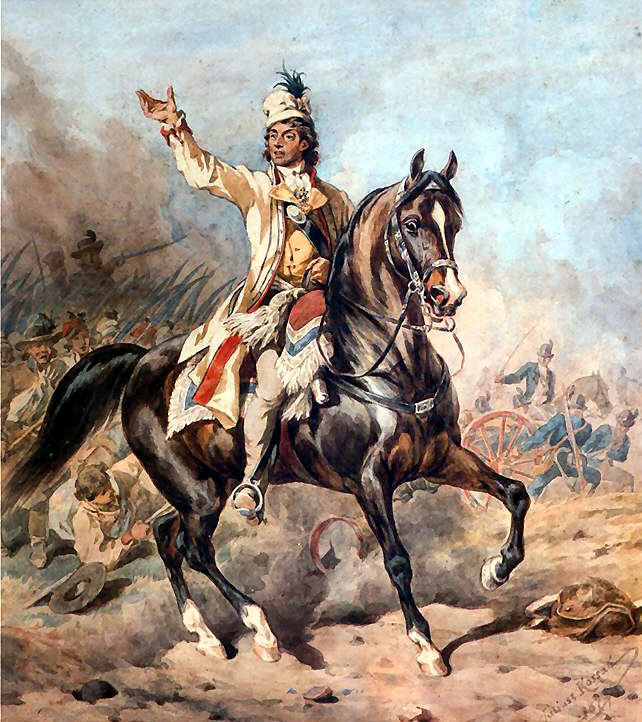 Tadeusz Kościuszko (1746-1817) is a national hero in Poland (Kościuszko Uprising, 1794) and the United States (American Revolutionary War, 1775-1783). He is perhaps the best known Pole in the world with many statues and monuments as well as geographic features named after him. The 200th anniversary of his death is celebrated this year under the patronage of UNESCO in recognition of "...his activity for the sake of peace, independence and democracy – the equality of people regardless of their skin colour or religion... He emphasized the role of both practical and citizen education, so that men and women who regained freedom should be aware of their rights, but also their duties with respect to the freedom and welfare of others..." [Painting by Juliusz Kossak, 1879]
Tadeusz Kościuszko (1746-1817) is a national hero in Poland (Kościuszko Uprising, 1794) and the United States (American Revolutionary War, 1775-1783). He is perhaps the best known Pole in the world with many statues and monuments as well as geographic features named after him. The 200th anniversary of his death is celebrated this year under the patronage of UNESCO in recognition of "...his activity for the sake of peace, independence and democracy – the equality of people regardless of their skin colour or religion... He emphasized the role of both practical and citizen education, so that men and women who regained freedom should be aware of their rights, but also their duties with respect to the freedom and welfare of others..." [Painting by Juliusz Kossak, 1879]
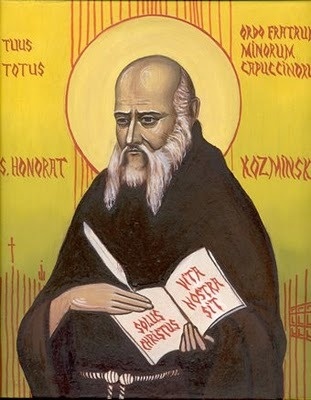 Honorat Koźmiński (1829-1916) was born Florentyn Wacław Jan Stefan Koźmiński in Biała Podlaska. He enrolled in the School of Fine Arts in Warsaw (1845) but Russians arrested him (1846) for conspiring against the tsar. After release from the dreaded X pavilion of Warsaw Citadel, he became a Capuchin monk (1848), a priest (1852), and a founder of the congregations of Felician Sisters (1855) and the Capuchin Sisters of Saint Clare (1860). He was interned for many years after Russians closed all monasteries following the January Uprising (1863). In spite of tsarist bans and continuing revisions & interrogations, he used his "closet" confessional to connect thousands of people and arrange secret gatherings. He organized many covert congregations based on the rule of the Third Order of Saint Francis helping the sick, handicapped and poor. In October 1988, Pope John Paul II proclaimed him Blessed, after the process of beatification commenced in 1929.
Honorat Koźmiński (1829-1916) was born Florentyn Wacław Jan Stefan Koźmiński in Biała Podlaska. He enrolled in the School of Fine Arts in Warsaw (1845) but Russians arrested him (1846) for conspiring against the tsar. After release from the dreaded X pavilion of Warsaw Citadel, he became a Capuchin monk (1848), a priest (1852), and a founder of the congregations of Felician Sisters (1855) and the Capuchin Sisters of Saint Clare (1860). He was interned for many years after Russians closed all monasteries following the January Uprising (1863). In spite of tsarist bans and continuing revisions & interrogations, he used his "closet" confessional to connect thousands of people and arrange secret gatherings. He organized many covert congregations based on the rule of the Third Order of Saint Francis helping the sick, handicapped and poor. In October 1988, Pope John Paul II proclaimed him Blessed, after the process of beatification commenced in 1929.
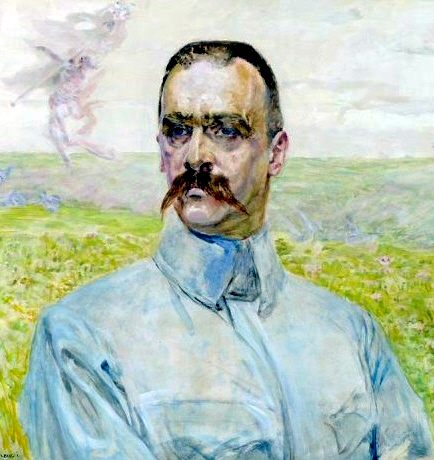 Marshal Józef Piłsudski (1867-1935) was a Polish patriot, social activist and Polish statesman recognized for his pivotal role in the restoration of Polish state (the Second Republic of Poland) after 123 years of partitions between the Austria, Prussia, and Russia empires. Anticipating the outbreak of WWI and believing that Poles have to fight with arms for their independence, he created the Polish Legions in 1914. His vision of Poland was a multicultural state with strong support for ethnic and religious diversity. After Polish state was restored in 1918, Piłsudski was the Chief of State (1918–22) and the First Marshal of Poland leading Polish Army to the victory over the outnumbering Russian forces attacking Poland during the Polish-Soviet war (1919-1921). He was also twice prime minister and de facto leader of Poland in years 1926–1935. [Painting by Jacek Malczewski, 1916]
Marshal Józef Piłsudski (1867-1935) was a Polish patriot, social activist and Polish statesman recognized for his pivotal role in the restoration of Polish state (the Second Republic of Poland) after 123 years of partitions between the Austria, Prussia, and Russia empires. Anticipating the outbreak of WWI and believing that Poles have to fight with arms for their independence, he created the Polish Legions in 1914. His vision of Poland was a multicultural state with strong support for ethnic and religious diversity. After Polish state was restored in 1918, Piłsudski was the Chief of State (1918–22) and the First Marshal of Poland leading Polish Army to the victory over the outnumbering Russian forces attacking Poland during the Polish-Soviet war (1919-1921). He was also twice prime minister and de facto leader of Poland in years 1926–1935. [Painting by Jacek Malczewski, 1916]
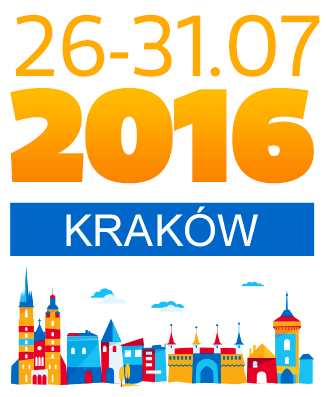
World Youth Day
WYD 2016 in POLAND
July 26-31, 2016
An estimated three million people from 187 countries arrived to Kraków, once the royal capital of Poland, for the nearly week-long celebration of World Youth Day (Światowe Dni Młodzieży). The WYD events are joyful and inspiriting gatherings of young people from all over the world assembling every 2-3 years to meet with the Pope and cultivate bonds among people of different cultures in the spirit of faith, hope and friendship.
WUD from the United States were
fellow Madisonians: A group of
mostly high school students under
the guidance of Fr. Brian Dulli
and Eva Verhoven (a PHC member)
and a group of UW students from
St. Paul University Catholic Center
Poland hosted World Youth Day for the second time around after WUD 1991 was held in Częstochowa. This year's event is a special tribute to Pope John Paul II, who called Kraków his home. It was also on his initiative that the international World Youth Day became an established tradition beginning with the 1986 gathering in Rome.
Major highlights of Pope Francis visit (July 27-31) included celebrating a mass in Jasna Góra Monastery to mark the 1050th anniversary of Poland’s Baptism, visiting the Shrine of Divine Mercy and former Nazi extermination camp Auschwitz-Birkenau, a mass in St John Paul II Shrine in Kraków as well as an evening vigil and closing mass in Campus Misericordiae (Field of Mercy) near Wieliczka.
When bidding farewell to the adoring and enthusiastic participants of WYD 2016 pilgrimage, Pope Francis prized Poland for being a "beautiful and special" place and announced Panama as the location for 2019 meeting.
Official WYD 2016 Song "Blest are the Merciful"
(click here for lyrics in Polish and English)
Left video: Kraków singers Right video: Folk group "Harni" from Zakopane
 Year 2017 marks the 550 anniversary of the first flis (transport of goods on rafts and floating barges) on the Wisła River after Poland signed the Second Peace of Toruń (1466) with Teutonic Knights and regained access to the upper part of the river and its mouth. Known also as the Queen of Polish Rivers, Wisła is a symbol of Polish identity and cultural heritage. For centuries, it was the main trading artery (for grains, timber and salt) and key factor in the economic boom that made Poland a major political and economic power in Europe during the Polish Golden Age (15th-17th century). [Painting by Jan Nepomucen Głowacki (ca 1847) shows the Wisła river and barge landing at the foot of Wawel, the Royal Castle in Kraków]
Year 2017 marks the 550 anniversary of the first flis (transport of goods on rafts and floating barges) on the Wisła River after Poland signed the Second Peace of Toruń (1466) with Teutonic Knights and regained access to the upper part of the river and its mouth. Known also as the Queen of Polish Rivers, Wisła is a symbol of Polish identity and cultural heritage. For centuries, it was the main trading artery (for grains, timber and salt) and key factor in the economic boom that made Poland a major political and economic power in Europe during the Polish Golden Age (15th-17th century). [Painting by Jan Nepomucen Głowacki (ca 1847) shows the Wisła river and barge landing at the foot of Wawel, the Royal Castle in Kraków]
 Adam Chmielowski (1845-1916) is also known as the Saint Brother Albert after Pope John Paul II beatified him (1983) and canonized as a Roman Catholic Church saint (1989). The sainthood process started in 1966 under Pope Paul VI who declared him Venerable in 1977. Chmielowski was born into an aristocratic Polish family, fought in the January Uprising (1863), studied engineering in Belgium and became a well-known painter (after studies in Paris and Munich). Later he joined the Third Order of Saint Francis (1887), devoted his life to the poor and homeless, and founded the Albertine Brothers (1888) and Albertine Sisters (1891) congregations of the same order. He is also a hero of the play written by Pope John Paul II, which became a base for the movie "Our God’s Brother" (directed by Krzysztof Zanussi and starring Christoph Waltz and Scott Wilson. [Painting by Leon Wyczółkowski, ca 1901-1902]
Adam Chmielowski (1845-1916) is also known as the Saint Brother Albert after Pope John Paul II beatified him (1983) and canonized as a Roman Catholic Church saint (1989). The sainthood process started in 1966 under Pope Paul VI who declared him Venerable in 1977. Chmielowski was born into an aristocratic Polish family, fought in the January Uprising (1863), studied engineering in Belgium and became a well-known painter (after studies in Paris and Munich). Later he joined the Third Order of Saint Francis (1887), devoted his life to the poor and homeless, and founded the Albertine Brothers (1888) and Albertine Sisters (1891) congregations of the same order. He is also a hero of the play written by Pope John Paul II, which became a base for the movie "Our God’s Brother" (directed by Krzysztof Zanussi and starring Christoph Waltz and Scott Wilson. [Painting by Leon Wyczółkowski, ca 1901-1902]
 Joseph Conrad (1857-1924) is one of the leading figures in the world's literature and one of the greatest novelists to ever write in English (despite acquiring it only in his twenties). He was born in a fiercely patriotic Polish family as Józef Teodor Konrad Korzeniowski but favored his middle name Konrad received in tribute to poetic works of the great Polish poet, Adam Mickiewicz (Dziady and Konrad Wallenrod). He left Poland in 1874 and began a career in merchant fleet (19 years) resulting in the experiences becoming later a backdrop for the prolific literary work. Translated into many languages and exerting influence on many great writers, his most famous novels include Lord Jim, Nostromo, The Nigger of the 'Narcissus', The Secret Agent, The Shadow Line and Under Western Eyes (banned in the communist Poland). But Heart of Darkness remains his most influential work with adaptations for music and opera scenes, radio and theatre plays, TV productions, motion pictures (Apocalypse Now and Heart of Darkness) and several video games. Conrad's story entitled "The Duel" ("Point of Honor" in the United States) was adopted in the screenplay for the movie The Duellists.
Joseph Conrad (1857-1924) is one of the leading figures in the world's literature and one of the greatest novelists to ever write in English (despite acquiring it only in his twenties). He was born in a fiercely patriotic Polish family as Józef Teodor Konrad Korzeniowski but favored his middle name Konrad received in tribute to poetic works of the great Polish poet, Adam Mickiewicz (Dziady and Konrad Wallenrod). He left Poland in 1874 and began a career in merchant fleet (19 years) resulting in the experiences becoming later a backdrop for the prolific literary work. Translated into many languages and exerting influence on many great writers, his most famous novels include Lord Jim, Nostromo, The Nigger of the 'Narcissus', The Secret Agent, The Shadow Line and Under Western Eyes (banned in the communist Poland). But Heart of Darkness remains his most influential work with adaptations for music and opera scenes, radio and theatre plays, TV productions, motion pictures (Apocalypse Now and Heart of Darkness) and several video games. Conrad's story entitled "The Duel" ("Point of Honor" in the United States) was adopted in the screenplay for the movie The Duellists.
 Tadeusz Kościuszko (1746-1817) is a national hero in Poland (Kościuszko Uprising, 1794) and the United States (American Revolutionary War, 1775-1783). He is perhaps the best known Pole in the world with many statues and monuments as well as geographic features named after him. The 200th anniversary of his death is celebrated this year under the patronage of UNESCO in recognition of "...his activity for the sake of peace, independence and democracy – the equality of people regardless of their skin colour or religion... He emphasized the role of both practical and citizen education, so that men and women who regained freedom should be aware of their rights, but also their duties with respect to the freedom and welfare of others..." [Painting by Juliusz Kossak, 1879]
Tadeusz Kościuszko (1746-1817) is a national hero in Poland (Kościuszko Uprising, 1794) and the United States (American Revolutionary War, 1775-1783). He is perhaps the best known Pole in the world with many statues and monuments as well as geographic features named after him. The 200th anniversary of his death is celebrated this year under the patronage of UNESCO in recognition of "...his activity for the sake of peace, independence and democracy – the equality of people regardless of their skin colour or religion... He emphasized the role of both practical and citizen education, so that men and women who regained freedom should be aware of their rights, but also their duties with respect to the freedom and welfare of others..." [Painting by Juliusz Kossak, 1879]
 Honorat Koźmiński (1829-1916) was born Florentyn Wacław Jan Stefan Koźmiński in Biała Podlaska. He enrolled in the School of Fine Arts in Warsaw (1845) but Russians arrested him (1846) for conspiring against the tsar. After release from the dreaded X pavilion of Warsaw Citadel, he became a Capuchin monk (1848), a priest (1852), and a founder of the congregations of Felician Sisters (1855) and the Capuchin Sisters of Saint Clare (1860). He was interned for many years after Russians closed all monasteries following the January Uprising (1863). In spite of tsarist bans and continuing revisions & interrogations, he used his "closet" confessional to connect thousands of people and arrange secret gatherings. He organized many covert congregations based on the rule of the Third Order of Saint Francis helping the sick, handicapped and poor. In October 1988, Pope John Paul II proclaimed him Blessed, after the process of beatification commenced in 1929.
Honorat Koźmiński (1829-1916) was born Florentyn Wacław Jan Stefan Koźmiński in Biała Podlaska. He enrolled in the School of Fine Arts in Warsaw (1845) but Russians arrested him (1846) for conspiring against the tsar. After release from the dreaded X pavilion of Warsaw Citadel, he became a Capuchin monk (1848), a priest (1852), and a founder of the congregations of Felician Sisters (1855) and the Capuchin Sisters of Saint Clare (1860). He was interned for many years after Russians closed all monasteries following the January Uprising (1863). In spite of tsarist bans and continuing revisions & interrogations, he used his "closet" confessional to connect thousands of people and arrange secret gatherings. He organized many covert congregations based on the rule of the Third Order of Saint Francis helping the sick, handicapped and poor. In October 1988, Pope John Paul II proclaimed him Blessed, after the process of beatification commenced in 1929.
 Marshal Józef Piłsudski (1867-1935) was a Polish patriot, social activist and Polish statesman recognized for his pivotal role in the restoration of Polish state (the Second Republic of Poland) after 123 years of partitions between the Austria, Prussia, and Russia empires. Anticipating the outbreak of WWI and believing that Poles have to fight with arms for their independence, he created the Polish Legions in 1914. His vision of Poland was a multicultural state with strong support for ethnic and religious diversity. After Polish state was restored in 1918, Piłsudski was the Chief of State (1918–22) and the First Marshal of Poland leading Polish Army to the victory over the outnumbering Russian forces attacking Poland during the Polish-Soviet war (1919-1921). He was also twice prime minister and de facto leader of Poland in years 1926–1935. [Painting by Jacek Malczewski, 1916]
Marshal Józef Piłsudski (1867-1935) was a Polish patriot, social activist and Polish statesman recognized for his pivotal role in the restoration of Polish state (the Second Republic of Poland) after 123 years of partitions between the Austria, Prussia, and Russia empires. Anticipating the outbreak of WWI and believing that Poles have to fight with arms for their independence, he created the Polish Legions in 1914. His vision of Poland was a multicultural state with strong support for ethnic and religious diversity. After Polish state was restored in 1918, Piłsudski was the Chief of State (1918–22) and the First Marshal of Poland leading Polish Army to the victory over the outnumbering Russian forces attacking Poland during the Polish-Soviet war (1919-1921). He was also twice prime minister and de facto leader of Poland in years 1926–1935. [Painting by Jacek Malczewski, 1916]
April Music @ Movies
Chopin Connections: Garrick Ohlsson
Mad-PolKA Productions with the support of The Polish Heritage Club-Madison and Consulate General of the Republic of Poland in Chicago presents:
Auguścik and Bester Duo:
Concert of Eastern-European accordion world music
from the PHC flyer: "Grażyna and Jarek perform Polish folk songs and F. Chopin's tunes based on traditional Polish music from the collection of 19th century Polish ethno-musicologist Oskar Kolberg, a "Polish Alan Lomax". His works inspired them to create their latest musical collaboration, this time outside of their respective jazz and klezmer musical idioms. Their arrangements evoke the soul of Polish music while paying tribute to the classical music sensitivities of both musicians."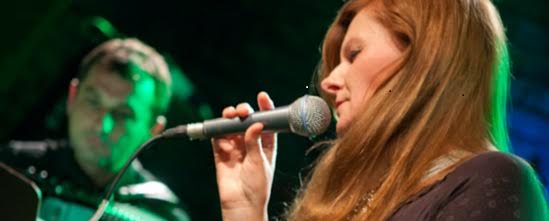
WHEN: April 17, 2014 6pm
WHERE: The Brink Lounge
POLISH CONTEMPORARY FOLK MUSIC
Two recent issues of the UK-based magazine SONGLINES include reviews and CDs recorded by Polish contemporary folk groups:

- the March 2016 issue (#115) contains CD with mostly live recordings of the winners place of the "New Tradition Festival" competition taking place in Warsaw every May;
- the April 2016 issue (#116) includes CD "Silesian Roots" featuring various musicians from Silesia (a region in south-western Poland) playing diverse musical styles.
Check the Mad-POLKA Productions release for more information
18th Annual Wisconsin Film Festival (April 14-21 2016) presents
COSMOS by Andrzej Żuławski
From festival notes: "The highly anticipated first film from Andrzej Żuławski (Possession) in fifteen years sadly became the last when the Polish maverick died in February at 75. Fortunately, Cosmos is as crazed and audacious a final salvo as one could hope for, proving the iconoclast auteur retained his edge to the last. No one else made movies as charged and uncompromised as this, and one can easily perceive the fifteen years’ worth of ideas, energy, and sheer filmmaking brio Żuławski poured into this cinematic maelstrom. An adaption of the famously “unadaptable” modernist novel by Witold Gombrowicz..."
"Locarno Interview: Andrzej Żuławski
" after winning the Best Director award in Locarno 2015"
The 5 Best Andrzej Zulawski Films
" written upon his passing on February 17, 2016
"Cosmos"review in The Holywood Reporter
and Variety (the name of Gombrowicz misspelled)
Detailed information about two screanings in our calendar:
April 15 11:15am UW Cinematheque at Vilas Communications Hall
April 19 8:30pm Sundance Cinema 5 at Hilldale Shopping Center





